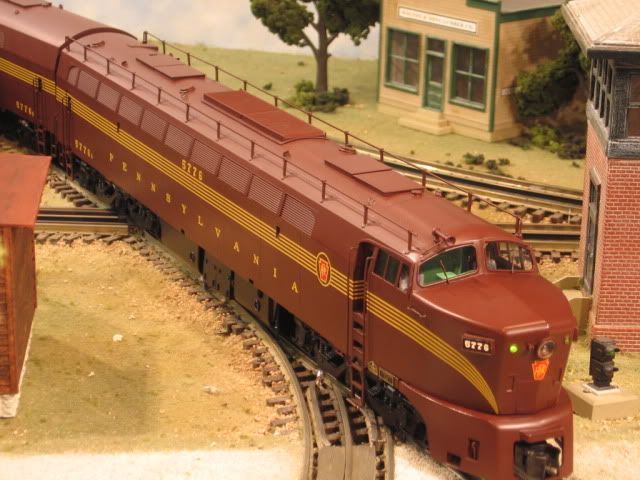I also heard part of the reason the sd45 never really caught on was that the extra cylinders tended to result in broken crankshafts.
Absolutely not true.
I did see two Conrail SD45's in pusher service on the horseshoe curve one time however.
So what was the reason for the broken crankshafts with the SD45. Or was it just rumor? *EDIT: Here's what I found* :
From Utahrails net -
EMD and the railroads soon found that EMD's 20 cylinder diesel engine was successful in stationary and marine service, but not in locomotive service, due to torsional flexing in the engine's long crankcase. When the 20 cylinder engine is put into a locomotive, the extra length of the crankcase results in more displacement of the main bearings relative to the crankshaft as the locomotive frame twists as it moves over the rails. This additional displacement puts additional loads on the main bearings in the ends of the engine, causing them to prematurely wear out. EMD's solution for the problem was closer attention to preventative maintenance: to line bore the block about three times as often as EMD's very successful 16 cylinder engine. The same torsional flexing occurs in the 16 cylinder crankcase, but because it has a shorter length, the loading of the crankshaft bearings is reduced. When in stationary or marine service, the engine block doesn't get the same twisting loads due to frame flexing, so the 20 cylinder engines successfully remain in service for extended periods of time.
Many railroads found that the SD45's 20 cylinder engine was reliable, if they followed EMD's recommended level of increased preventative maintenance. But the 20 cylinder engine's real weakness was its increased fuel consumption: in idle, 6 gallons per hour for the SD45, compared to an SD40's 5.5 gallons per hour; and under load, 194 gallons per hour for the SD45, compared to an SD40's 167 gallons per hour. On some railroads, the SD45's increased horsepower compared to the SD40 did not justify its increased fuel consumption.






